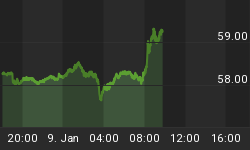It's clear that dangerous bubbles in home prices have appeared in a variety of developed and developing nations. Is the United States among them, or has it avoided recreating the factors that produced the bubble and housing crash of the previous decade? Our analysis suggests that the market for homes in the U.S. probably will diminish somewhat. The U.S. might see a continuation of the correction from the 2007 high, but the decline is likely to be more gentle than it will be in other countries. We also believe there will be some trading opportunities to go with the decline.
The international housing bubble has sparked warnings in recent weeks by economist Nouriel Roubini, who predicted the previous crash of the U.S. housing market, and economist Robert Schiller, this year's Nobel laureate and developer of the Case-Schiller housing indices. In countries as different from each other as Switzerland, China, and Brazil, home prices in urban areas have become unmoored from the balance point usually set by actual need for homes and the ability of buyers to service mortgages.
However, there's less agreement about whether a repeat housing bubble is forming in the United States, and the following chart illustrates some reasons why opinions vary. The nominal price of new homes, shown in red, has risen markedly since the 2009 low and has even exceeded its pre-crash high. It looks like a wave ready to crest. Yet new homes represent only about 10% of all U.S. home sales. A broader and probably more sober view would consider both new and existing homes and would correct for inflation and changes in average disposable income, as with the data series shown in blue. Seen that way, there doesn't appear to be a bubble at all.

Absent another crashing wave in the U.S. housing market, can we expect steady sailing and a continuation of the growth of recent years? Not so fast. Until very recently, a rather large portion of home sales has been to institutional investors. Hedge funds and similar entities are more likely to purchase multiple properties at once, sometimes sight-unseen, and they are less likely to press as hard in sales negotiations as would a real person taking out a mortgage. This institutional speculation has had the effect of propping up or driving up prices in several regions. The distorting effect of institutional buying is corroborated by the fact that home ownership among real people has declined to a level last seen in 1996.
Then, during the past quarter, something changed. Institutional buying dropped precipitously in October 2013. This data series looks very much like a mini-bubble encountering a mini-crash. Note also, this decline involves all types of homes, not just newly constructed ones.

In that context, with a housing market that's bumping along and sending off a few warning signals, what can our technical analysis of the charts reveal in terms of forecasts and trading opportunities? One of Robert Schiller's price indices offers a hint of what may be coming. The Case-Schiller price index for 10 representative cities includes the longest history among the firm's data series. With the post-2007 crash, this index found support at an almost exact Fibonacci 38.2% retrace of its rise from the prior low. Now, we see the index reaching a retrace level that would normally provide resistance. To the Elliott Wave analyst, this looks like a market that has the potential to make a second leg of correction downward.

Admittedly, the chart of the Case-Schiller index is not very detailed. However, analysis of some real, tradable data offers a similar picture and highlights some opportunities.

The iShares U.S. Home Construction ETF (NYSEARCA:ITB) broke decisively out of its rising channel early in 2013, and it is now testing an area that would be expected to provide resistance if the market is in an upward retrace. In addition, the Commodity Channel Index momentum indicator is testing its zero-line from below - a signal that often corresponds with price reversals. If price falls from the high it made in recent weeks, then downward targets for the ETF would include 17.71 and 13.96, based on Fibonacci relationships among price waves.
Pulte Homes (NYSE:PHM) is the largest single holding of the iShares ETF mentioned above, and it also has put in a recent test of potential retrace resistance. If a decline materializes, price targets would suggest the value of the stock could decline by about one-third to one-half. As with the prior chart, the CCI indicator for Pulte Homes is testing the zero-line from below.

An extended version of this article can be found at Trading On The Mark. It presents charts and price targets for additional stocks that are part of the housing ETF, including Lennar Corporation (NYSE:LEN), D.R. Horton Inc. (NYSE:DHI), Toll Brothers Inc. (NYSE:TOL), and NVR Inc. (NYSE:NVR).
















